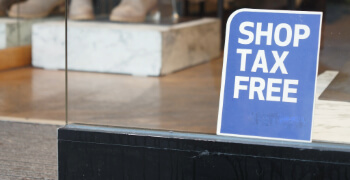Texas adopts single local use tax rate for remote sellers as of October 1, 2019
Sales tax compliance is about to get a whole lot easier for out-of-state sellers that collect Texas sales and use tax. Governor Greg Abbott has signed legislation permitting remote sellers to collect a single local use tax rate rather than the more than 1,500 different rates that currently exist in the Lone Star State.
The state sales tax rate in Texas is 6.25 percent, but that’s just part of the tax that needs to be collected on a transaction. Sellers must also collect the local tax in effect at the location of the sale, and local tax rates vary by sales tax jurisdiction. Texas being the size that it is (a tad larger than France, to put it into perspective), there are the aforementioned 1,500+ sales and use tax jurisdictions.
Why so many?
There are four types of local taxing entities in Texas: cities, counties, special purpose districts, and transit authorities. Each has its own boundaries in which the local tax (city, county, special purpose, or transit) applies. To make sales tax calculation more interesting, these boundaries can overlap.
Brick-and-mortar businesses generally collect the rate in effect at the location of the sale, so for them it’s usually not too hard to figure out which sales tax rate to charge. However, when the sales or use tax rate is based on the location of the consumer, determining the proper rate quickly gets complicated. In a big way.
Internet sellers and other businesses that deliver orders directly to consumers in Texas generally collect the rate in effect where the order was fulfilled, if it was fulfilled in Texas, or where the order was received. For the latter, the 1,500+ sales tax jurisdictions must be the stuff of nightmares.
Texas law currently doesn’t require all out-of-state retailers to collect and remit sales tax, but for a variety of reasons, some remote sellers do collect tax on their sales into the state. Amazon is one such seller. Starting October 1, 2019, many more remote sellers will be required to collect and remit Texas sales and use tax under a new economic nexus rule.
House Bill 2153 should help these sellers sleep soundly. It will turn those 1,500+ rates into one. From October 1, 2019, through December 31, 2019, remote sellers may elect to collect a single local use tax rate of 1.75 percent. When combined with the state rate that applies to most Texas sales, they’ll collect a flat 8 percent sales/use tax on all sales in the state. They won’t have to collect 6.25 percent in Apple Springs, 7.25 percent in El Paso, and 8.25 percent in Houston. Like most things in Texas, this is big.
HB 2153 takes effect October 1, 2019. Additional details are available on the Texas Comptroller sales tax page.
Texas is one of a growing number of states requiring remote sellers to collect and remit sales tax. To learn more, check out our state-by-state guide to economic nexus laws.

Avalara Tax Changes 2026 is here
The 10th edition of our annual report engagingly breaks down key policies related to sales tax, tariffs, and VAT.
Stay up to date
Sign up for our free newsletter and stay up to date with the latest tax news.















